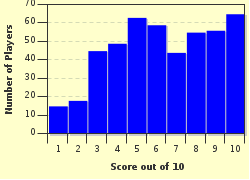Quiz Answer Key and Fun Facts
1. Which one of these is associated with a different country than the others?
2. Who among these composers is not from the same country as the other three?
3. Who in this group is the odd one out? (Three are known for their works in a certain genre, while the oddball never wrote in that genre.)
4. Who was not a member of "The Five?"
5. Who was not one of "Les Six?"
6. Who did not belong to the "Second Viennese School?"
7. Let's try a little chronology. Which composer was not a contemporary of the other three?
8. Who in this set doesn't belong? (The odd one did not live during the same era as the other three.)
9. Three of these composers died tragically young, but which one lived to a ripe old age?
10. Can you spot the gentleman hiding among the ladies?
Source: Author
celicadriver
This quiz was reviewed by FunTrivia editor
ertrum before going online.
Any errors found in FunTrivia content are routinely corrected through our feedback system.

